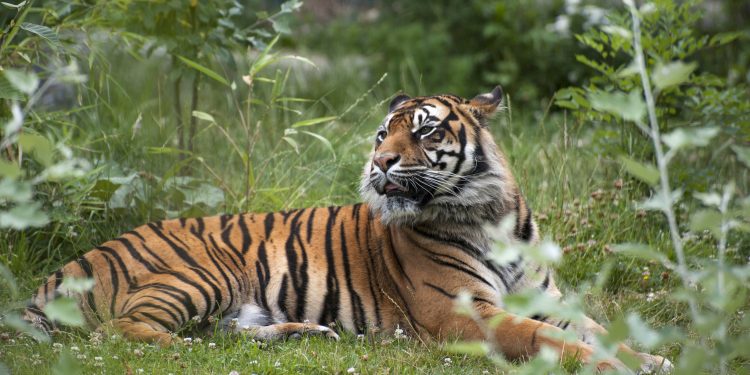Tiger Reserve in Bihar to Create Largest Grasslands in India

Bihar, in an ambitious move, seeks to improve conditions on a tiger reserve—not only by helping the animals themselves, but by creating the largest grassland in India’s recent history. If new measures are successful, over 800 acres of the Valmiki Tiger Reserve will be converted from forest to grassland in order to provide room for the reserve’s growing tiger population.
Santosh Tiwari, the director of the reserve, described the delicate early measures already taking place on the reserve, including the removal of flammable grass species over hundreds of acres to help provide a more stable ecosystem in the future. According to Tiwari, such a large-scale project would cost over twenty million rupees, but would create the biggest grassland of the country.
The grassland has been made necessary not by the failure of the reserve to provide a habitat for tigers, but by its success. In recent years, wild tiger populations on the reserve have doubled from 10 individuals in 2010 to over 20 tigers in 2014—not a big jump, until one considers that fewer than 4,000 wild tigers are left in the world. To put that into perspective, imagine another 20 million people entering your state in just 4 years. While there would be issues with overcrowding and homelessness, the increased population would provide incentive for citywide expansion, and the incoming people would bring new ideas and values to the area. It is in reserves like Valmiki, with programs such as this one, that we can find hope for the survival of these cats despite loss of habitat, climate change, and poaching.
A new grassland’s benefits successfully address the fears of those concerned with the tiger-centric nature of India’s conservation program. While it definitely important to protect the endangered organisms in reserves, the dense forests of many current tiger reserves are ecologically harmful: they are generally dominated by a single, successful species of tree; and the trees take up a lot of room that could be better utilized by both herbivores and tigers. By clearing out grasslands, the reserve will gain biodiversity as well as larger potentials for tiger population sizes.
At a time when shrinking grasslands are threatening India’s biodiversity and tiger populations are at an all-time low, this initiative solves two environmental issues in a single move. This tiger reserve can — and should — serve as an example for other reserves throughout India and Asia.
[Image Attribute: Flickr User]



